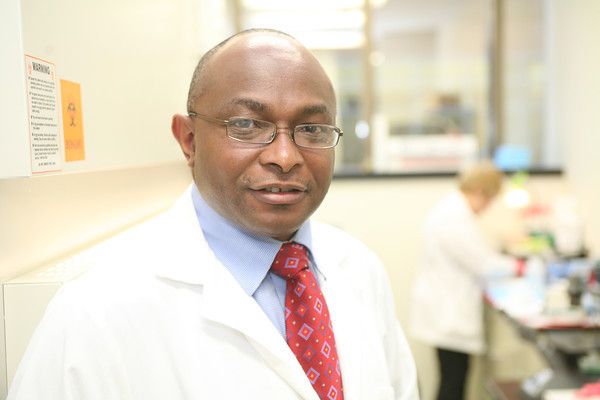Breaking Down Barriers to Clinical Trials
Clinical trials are no longer a shot in the dark. They are based on sound, scientific evidence that the treatment might lead to a cure.Kunle Odunsi, MD, PhD, FRCOG, FACOG
During the Buffalo Cancer Moonshot Summit, Roswell Park joined a national conversation on how to end cancer as we know it. This initiative, backed by Vice President Joe Biden, intends to double the speed of cancer research and remove barriers to clinical trials by improving access to information.
Our commitment to finding cures, and our efforts in the Division of Translational Immuno-Oncology, seamlessly aligns with this bold initiative. But in order to accelerate the progress against cancer, patients need to be on clinical trials.
Currently, less than 5 percent of patients enroll in research studies. The reasons behind this low participation rate are numerous, but we are dedicated to improving this issue over time. We hope that by eliminating the fears and misconceptions about clinical cancer research, and highlighting the safety, efficacy and potential of these life-saving therapies, we’ll be one step closer to a cure.
To dispel common myths and build awareness about the importance of cancer clinical trials, we addressed two of the most common, patient concerns:
I’m worried about the safety, efficacy and side effects associated with clinical trials. I don’t want to be a guinea pig.
Patients who are afraid of clinical trials or who are afraid of research, should spend just one day with us. We will provide you with the information you need to make an informed decision about your care. We guide you through the process and show you that clinical trials are not meant to use patients as guinea pigs. They are meant to cure cancer.
When we do phase I clinical trials nowadays, we are no longer just testing whether a drug is safe. We are shooting for a cure right from the start. These clinical trials are based on very sound rationale.
To find a cure, and achieve any aspect of the Cancer Moonshot, patients need to be on clinical trials. Again, one of the major changes in clinical trial design over the last few years is that they are no longer a shot in the dark. They are no longer just testing something blindly. Clinical trials are based on a very deep understanding of the biology of cancer. I encourage you to think of clinical trials as one way to gain access to the latest and best treatments.
If my doctor doesn’t recommend a clinical trial, then there isn’t a study that is right for me.
Patients need to do their own research and be educated about all the options so they can drive their own care. Even if your community physician is not recommending a clinical trial, I think it’s important to ask the question, “are there any clinical trials that are suitable for me.”
In 2016, 1.6 million Americans will be diagnosed with one form of cancer or the other and unfortunately 600,000 of these patients will pass away from the disease. Cancer doesn't discriminate. It can strike the young, the old, it can strike family, friends, neighbors and coworkers. The Cancer Moonshot initiative is an effort to energize our nation to fight this deadly disease and destroy it once and for all.
But it can’t be accomplished by one person alone. It takes a community. Not one person. Not one organization. Not one discipline. Whether you are a patient, whether you are a caregiver, whether you are a doctor, a scientist, a patient advocate, your commitment to these efforts are going to be necessary. As a society, we need to understand the issues that hinder access, and break down barriers so patients can receive the best possible care.
During the Buffalo Cancer Moonshot Summit, we discussed ways that everyone #CanServe. Watch the entire event.
